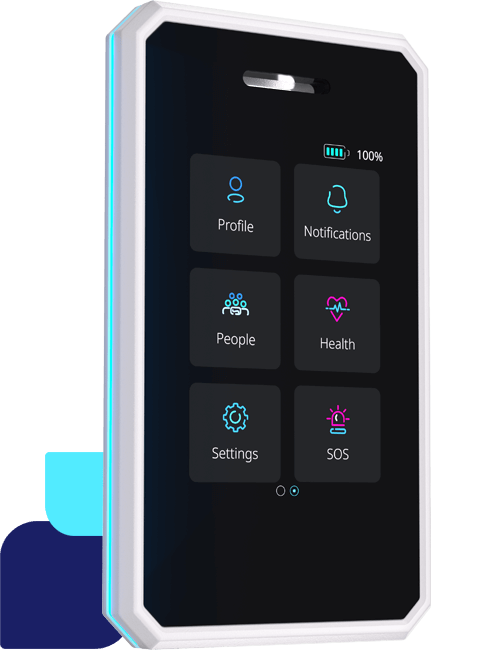A lot of companies use plastic ID badges, and they have used them for a long time. Plastic ID badges are supposed to act as a layer of security, to act as identification for employees, control access, and visibly separate staff from visitors. But do plastic badges provide information that can be acted on, or translated into meaningful change? No, not really.
So, in this article, we’re looking into a great way to replace plastic ID badges – a wearable real time location system.
What is a real time location system?
As you might expect, a real time location system uses a series of devices, to ultimately track the location of its wearer. But really, the beauty of some of these systems is in their ability to not just track, but to also identify, authenticate and empower its users. For example, by using built-in sensors and the ability for devices to interact, you can govern access to areas, assign tasks and automate processes across your workforce (and more!)
The Sense real time location system is made up of three main parts. Sense Badges, which are worn by employees; Sense Gateways which relay signals and messages between devices; and the Sense Console, which is the software that pulls all the data together into a format that’s easy to understand and display in reports.
Plastic badges problems
Let’s get straight into some of the key problems with a plastic ID badge system, when compared to something more modern like Sense.
For a start, simple plastic ID badges don’t have fall detection, SOS or emergency alerts, or air quality sensors – meaning they do nothing to actually protect your employees, especially frontline workers.
Another shortcoming of the plastic badge is the inability to verify the user beyond a name and picture. And the lack of system in employee hands to show who is allowed where and when, forces companies to rely on employees having up-to-date knowledge and remembering accurately. Plastic badges rely on employees being vigilant. As an employee, it can be difficult to keep an eye out on who is who and what they’re supposed to be doing, when staff are extremely busy, or work with a large amount of other people regularly.
Plastic badges don’t provide data that can be actioned or used to improve. Simple access timestamps don’t give you a complete understanding of how your office actually works. Plastic badges don’t properly allow you to understand movement patterns, busy areas, bottlenecks, task completion.
Oh, and sure they can beep somebody in and out of a room, they can even integrate with a clocking in machine… but can you even trust the timestamps? It’s easy enough to pick up the wrong badge, or sign in a friend who is running late.
How does Sense perform better than a plastic badge?
The Sense system is better than a plastic badge in many ways. First and foremost, it makes it very difficult for bad actors to use false identification to gain access to areas. Built in biometric authentication into Sense Badges means verified employees can login and use the badge as their ID in the workplace. This means an unauthorised person trying to use the badge wouldn’t be able to login to show identity verification. Whereas with a plastic badge the identity, such as name and picture, is much easier to alter and misuse if a plastic badge is lost or stolen.
Plastic badges record access, but don’t show a user’s movement within a room. So, in large rooms it’s difficult to tell if tasks were completed. For example, knowing if a security guard checked doors and windows were locked. Real time location systems such as Sense, however, can clearly demonstrate a badge wearer’s movement and allows them to check off when a task is completed so nobody forgets or accidentally misses anything. Task lists can also be automatically generated as a badge wearer enters a room using workflows set up by management.
Sense systems can also track assets and allow users to report on maintenance. The system can also allow badge wearers to send messages and receive automated alerts. Far above the functionality of a plastic badge.
If you’re interested to learn more about how Sense can help your company, speak to one of our consultants today.







